 Weird Stuff
Weird Stuff  Weird Stuff
Weird Stuff  Books
Books 10 Pen Names More Famous Than Their Authors
 Creepy
Creepy 10 Unnerving Legends from Around the World
 Movies and TV
Movies and TV 10 Amazing Lead Actor Ideas for Superhero Movies
 Our World
Our World 10 Crazy Facts about Cycads That Might Surprise You
 Technology
Technology 10 World-Changing Examples of Turning Dumb Technology into Smart Technology
 Pop Culture
Pop Culture Ten Celebrities Who Straight-Up Lied on Home Tours
 Animals
Animals 10 Remarkable Things We’ve Recently Learned about Animals
 Weird Stuff
Weird Stuff 10 Reasons the Psychic Internet Theory Will Blow Your Mind
 Movies and TV
Movies and TV Television’s Top Ten Most Ruthless Serial Killers
 Weird Stuff
Weird Stuff 10 Things That Would Have Killed You in the Old West
 Books
Books 10 Pen Names More Famous Than Their Authors
 Creepy
Creepy 10 Unnerving Legends from Around the World
Who's Behind Listverse?

Jamie Frater
Head Editor
Jamie founded Listverse due to an insatiable desire to share fascinating, obscure, and bizarre facts. He has been a guest speaker on numerous national radio and television stations and is a five time published author.
More About Us Movies and TV
Movies and TV 10 Amazing Lead Actor Ideas for Superhero Movies
 Our World
Our World 10 Crazy Facts about Cycads That Might Surprise You
 Technology
Technology 10 World-Changing Examples of Turning Dumb Technology into Smart Technology
 Pop Culture
Pop Culture Ten Celebrities Who Straight-Up Lied on Home Tours
 Animals
Animals 10 Remarkable Things We’ve Recently Learned about Animals
 Weird Stuff
Weird Stuff 10 Reasons the Psychic Internet Theory Will Blow Your Mind
 Movies and TV
Movies and TV Television’s Top Ten Most Ruthless Serial Killers
10 Weird Facts About The Early Church
Various religions promote their versions of universal and eternal truths. Although it might seem that these “truths” haven’t changed over the years, a glimpse at the history of any religion will reveal that they all evolve with time.
What seems perpetual today was once a hotly contested innovation. Christianity is no exception. The early Church was a seething tumult of controversies and rivalries that shaped what has become today’s Christianity. Here are 10 weird facts from the early days of the Christian faith.
10 Communists
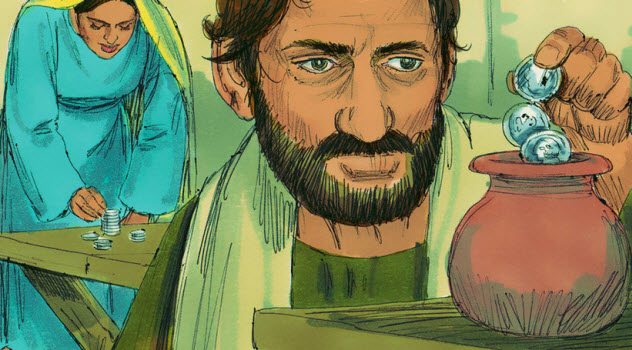
The Acts of the Apostles is a book in the New Testament which describes the founding of the Christian church after the death of Jesus. It is one of our best sources for the early Church, and it contains passages that make it seem as if early Christians followed a variety of communism.
Here is a description from Acts 4: 32–35:
All the believers were one in heart and mind. No one claimed that any of their possessions was their own, but they shared everything they had. [ . . . ] For from time to time those who owned land or houses sold them, brought the money from the sales and put it at the apostles’ feet, and it was distributed to anyone who had need.
In Chapter 5 of the Book of Acts, the radical message that all should be shared is underlined by the tale of Ananias and Sapphira. This married couple sells their property and gives some of the money to the apostles to share with the others.
For holding back part of their cash, St. Peter upbraids them. “Then Peter said, ‘Ananias, how is it that Satan has so filled your heart that you have lied to the Holy Spirit and have kept for yourself some of the money you received for the land?’ “[1]
Ananias falls down dead at the apostle’s feet. When Peter questions Sapphira about the money, he accuses her of conspiring against the Spirit of the Lord. She likewise drops dead on the spot.
9 Eunuchs
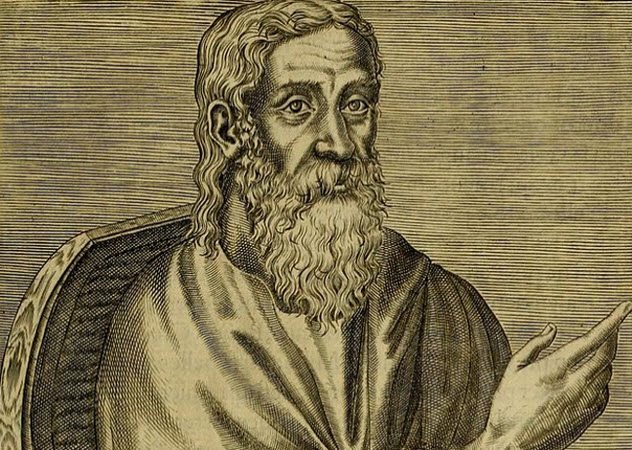
Matthew 19:12 has Jesus telling His followers that “there are eunuchs who were born that way, and there are eunuchs who have been made eunuchs by others—and there are those who choose to live like eunuchs for the sake of the kingdom of Heaven. The one who can accept this should accept it.” This passage caused extensive debate—and more pain—for some members of the early Church.
The historian Eusebius records how the Church father Origen read this part of the Bible and decided to take it literally. In what Eusebius calls Origen’s “daring act,” the young man fulfilled Jesus’s seeming command to cut off his testicles.[2]
Origen did this for two reasons: to follow Jesus and to prevent himself from becoming involved with women and causing a scandal for the Church. Some admired Origen’s zeal, but others attacked him for it.
Castration of clergy was apparently enough of a problem that the First Council of Nicaea had to issue guidelines. Anyone who lost his testicles through illness or was castrated by barbarians could remain a clergyman. However, anyone who castrated himself had to stop being a cleric.
8 Love Feasts
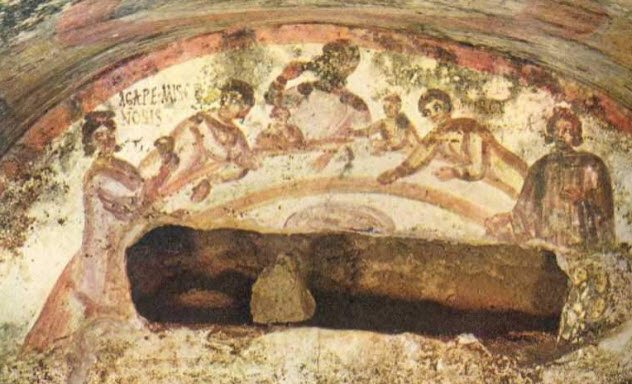
In a dialogue written in the second century by Marcus Minucius Felix, many of the pagan arguments used at the time against the Christian faith are recorded. These include that the Christians meet together for meals that conclude with the drinking of blood before the candles are extinguished and the meal becomes an orgy.
A modern Christian may recognize some of this, though probably not the orgy. Drinking the blood of Jesus is a common part of Christian worship today. So did the early Church sanction orgies, too?
Probably not. In all likelihood, the pagan interlocutor is repeating a garbled version of a Christian “love feast” (aka agape feast). Agape is the Greek word for a universal form of love.
At these meetings, it seems that Christians gathered to eat together in fellowship and to partake of the Eucharist, the eating of bread and drinking of wine in memory of Jesus. They could turn rowdy, however.
In 1 Corinthians, St. Paul writes about the problems at the meals being held in Corinth:
So then, when you come together, it is not the Lord’s Supper you eat, for when you are eating, some of you go ahead with your own private suppers. As a result, one person remains hungry and another gets drunk. Don’t you have homes to eat and drink in? Or do you despise the church of God by humiliating those who have nothing?[3]
In the following centuries, the love feast fell out of favor and was banned from most churches.
7 Female Church Leaders
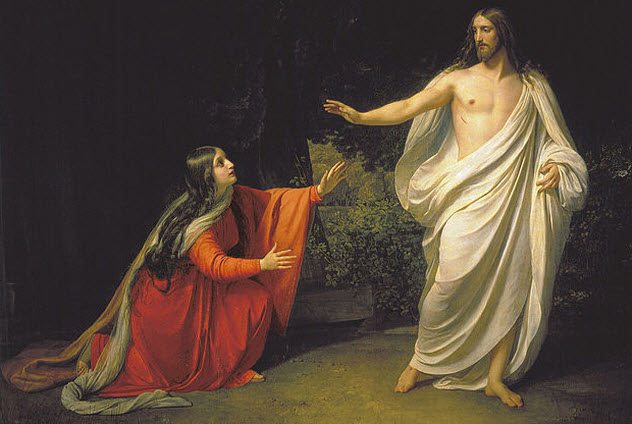
The Bible makes it clear that there were a number of women in Jesus’s inner circle, including Mary Magdalene and His mother, Mary. Mary Magdalene is beside Jesus as He is crucified, and she later finds His tomb empty.
Joanna was a wealthy supporter of Jesus and the apostles and witness to the resurrected Jesus. In his letter to the Romans, St. Paul writes about another woman: “I commend to you our sister Phoebe, a deacon of the church at Cenchreae . . . for she has been a benefactor of many and of myself as well.”[4] It seems clear from the evidence that women played major roles in the early Church, yet the Christian churches came to bar women from holding many offices.
While Paul wrote about Phoebe as a deacon, he wrote elsewhere that women should stay silent in churches. That Jesus chose 12 male disciples has also been used to restrict the ability of women to rise in the Church. From the Middle Ages to the past century, women were able to be saints and nuns but not much else. Now that many churches do allow women to become clergy, attention is being drawn to the women of the early Church.
6 Martyrdoms Helped The Church
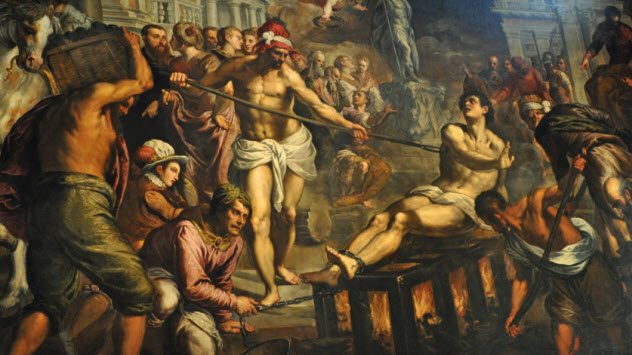
The early Church was built on the blood of martyrs. While the Roman Empire was pagan, it was dangerous to be a Christian. Purges and persecutions were regularly held. To the Romans, who generally tolerated other gods and even added foreign deities to their pantheon, the Christians seemed perverse and antisocial in holding to just their own god.
Christians refused to sacrifice to Roman gods or to the emperor and so seemed to be against Rome itself. Christians who refused to sacrifice and say that “Caesar is lord” would face any number of horrible deaths.
The tales of martyrdom were used by the early Church to show the bravery of those who died for Jesus and to recruit others to Christianity. St. Lawrence was a deacon who was tortured by Romans looking for the treasure of the Church. He was roasted over a fire to make him talk. But he only said this to his persecutors: “Turn me over, I’m done on this side.”[5]
Other Christians were thrown to beasts in the arena, pulled apart by horses, skinned, and drowned. This does not seem to have negatively affected the rise of Christianity.
5 Circumcision
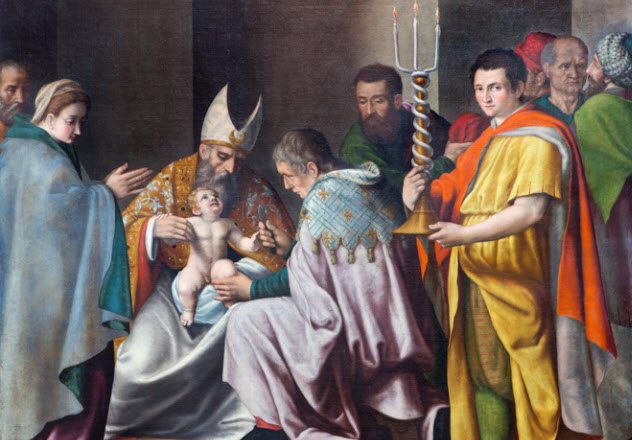
Like Jesus, His earliest followers were all Jewish. But Christianity soon spread beyond Judaism. The controversy surrounding circumcision was the first that the Church had to deal with. As Jesus Himself was circumcised in accordance with Mosaic law, did His followers have to be?
Chapter 15 of the Book of Acts describes the Council of Jerusalem, the first council called by the Church to decide on a theological matter.[6] That matter was whether Gentiles who converted to Christianity needed to give up their foreskins.
St. Paul thought that men were saved by faith alone, while others thought that converts had to keep Mosaic law and be circumcised. So as not to put off Gentile converts, the Council of the Apostles and the Elders decided that these were the only laws needed for converts: “You are to abstain from food sacrificed to idols, from blood, from the meat of strangled animals, and from sexual immorality.”
As the Book of Acts says, “The people read it [the decision] and were glad.” Particularly the men.
4 Rise Of The Papacy
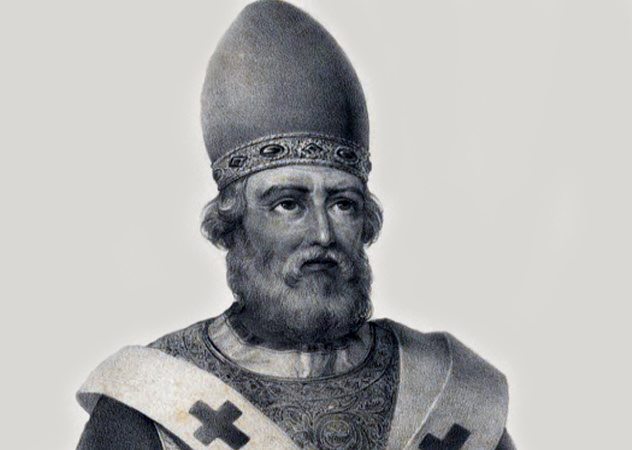
The early Church was riven by discord. With the difficulties of communicating over long distances, it was impossible to enforce uniformity between congregations. Church leaders had to make decisions on the spot. Other leaders would often disagree with the outcome, and the competition for power spread. Bishops became fighters in a turf war to control theology.
In the early centuries of Christianity, the church in Rome was one church among many, each with competing claims to supremacy. Rome was the center of a huge empire, so the Christian church there had prestige. But under pagan emperors, it had little power. This changed under Christian emperors. Theodosius I proclaimed that the Roman church was supreme and that of Constantinople was second.[7]
He had perhaps been persuaded by the teachings of Pope Damasus I. Damasus taught that it was not from church councils and worldly power that Rome was the supreme church but from the words of Jesus. As the bishops of Rome claimed to be the inheritors of St. Peter and the see of St. Peter was the rock upon which Jesus had built His church, it was directly from Jesus that the bishop of Rome (the Pope) claimed his power.
3 The End Was Nigh

“Truly I tell you, some who are standing here will not taste death before they see the Son of Man coming in his kingdom.” So says Jesus in Matthew 16:28. Some have seen this as meaning that the end-time would soon arrive—within the lifetimes of those whom Jesus had known.
St. Paul and others in the early Church also seemed to have believed that the world would soon end. Some seem to have been troubled that Jesus did not return and the world stubbornly went on existing.
1 Thessalonians is a letter in which St. Paul[8] reassures them that those who have died between Jesus’s death and His return will still receive eternal life. “Brothers and sisters, we do not want you to be uninformed about those who sleep in death, so that you do not grieve like the rest of mankind, who have no hope.”
Paul tells the Thessalonians that “we who are still alive” at that point (he assumes the end will happen in his lifetime) will follow those who are already dead into Heaven. Every generation since has also had those who assume that the Second Coming is just around the corner.
2 Strange Sects

Early Christianity was not homodox—not all people or churches believed the same things. Many sects arose that considered themselves Christian at that time. Yet they would look very out of place in today’s Christianity.
Gnostic Christians believed that the world of flesh and matter was one of corruption and suffering, but the world of spirit was pure and perfect. Why would a good god create a corrupt world? The Gnostics said that he did not.
Instead, they believed in two gods. One, the god of the Old Testament, was an evil god who made the world. The god of the New Testament was the good and spiritual god.
Carpocratians followed the Gnostic teachings of Carpocrates, who first used images of Christ in worship but held some unique ideas about how a Christian should behave.[9]
Carpocrates taught that his followers would have to experience everything—both good and sinful—to avoid being reincarnated into this awful world. For him, orgies may well have been a form of Christian worship.
1 The Making Of The Bible
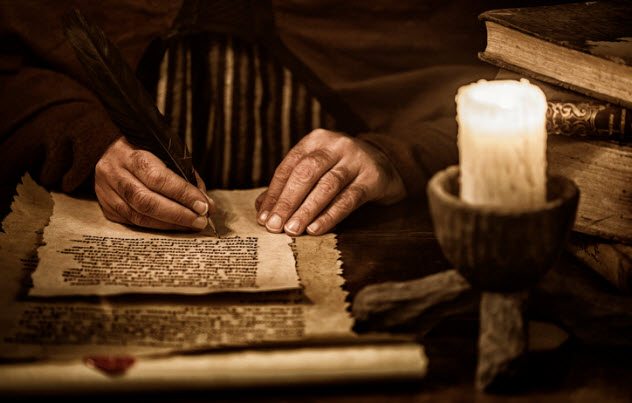
Today, the Bible is a book. A big book, true, but still a book. In fact, it is a whole library of books written by different people at separate times in various languages.
How was this collection of books put together, and who decided which books should be left out? There are disparities today among different churches as to which books should be included in the Old Testament canon, but the New Testament is fairly uniform.
The New Testament is comprised of 27 books, including the four Gospels, Acts, apostolic letters, and the Book of Revelation. These texts were composed separately and transmitted between Christians in copies.
The first person to put together a New Testament as Scripture was Marcion of Sinope, one of the Gnostics described above.[10] He rejected the Gospels of Matthew and John that are accepted today. Various church councils debated the matter, and they rejected many interesting Gospels and letters in forming the modern New Testament.
The Infancy Gospel of Thomas has tales from Jesus’s youth that include Him making living birds from mud, withering a teacher, killing a child for barging into Him, and then bringing the child back to life. Other gospels feature Mary Magdalene or even Judas as their central character in following the life of Jesus. Many non-biblical gospels can now be accessed online and compared to the Gospels that did make the cut.
Read about dirty secrets of the Catholic Church on 10 Dirty Secrets Of The Catholic Church and 10 Secrets The Catholic Church Hopes You’ve Forgotten.








